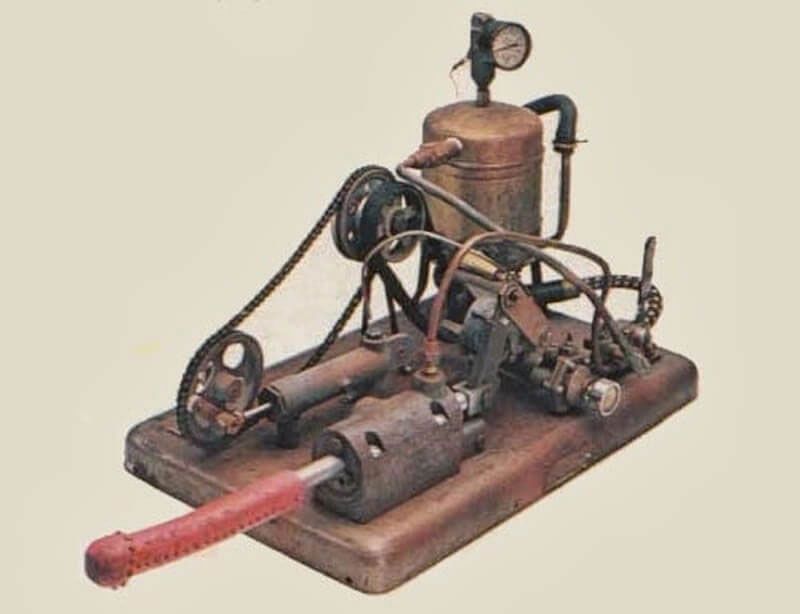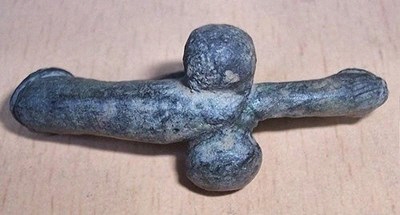From Phallic Rocks to Vibrating Wands: The Wacky Evolution of Sex Toys
The sex toy industry has emerged as a flourishing powerhouse, generating billions of dollars in revenue and continually expanding its product offerings. However, reaching this pinnacle of success was no easy feat and required considerable time and effort.
When the term "sex toys" comes to mind, you might envision battery-operated gadgets, USB-charged contraptions, or even app-connected devices. However, the truth is that sex toys have a rich history spanning centuries.

The origins of sex toys trace back to an astonishing 29,000 BC when Neanderthals residing in what is now Germany's Swabian Jura region began carving rocks into phallic shapes. Although their specific purpose remains uncertain, whether utilized as sex toys, for fertility rituals or simply as a source of amusement, these early creations laid the foundation for the modern-day sex toy industry.
Sex toy craftsmanship took a more innovative and, quite frankly, peculiar turn around 500 BC when ancient Greeks fashioned artificial phalluses from a variety of materials. Some were crafted from brass or stuffed leather, while others, inexplicably, were made from old loaves of bread. These unique objects, known as "olisbokollikes," not only provide a historically intriguing glimpse but also present an environmentally conscious and cost-effective approach. Additionally, the Greeks pioneered the use of olive oil as a lubricant, further demonstrating their resourcefulness.
By 1300 AD, the sex toy industry was truly thriving, particularly in ancient China, where various groundbreaking creations emerged. Ben Wahh Balls filled with animal semen, cock rings made from goat eyelids, and double-sided dildos all took center stage during this era. Truly, it was an extraordinary time to be alive. However, the term "dildo" did not enter the lexicon until the Italian Renaissance around 1400 AD, derived from the word "dilett o," meaning pleasure.
In the 1600s, French sailors embarked on long, solitary voyages and pioneered the concept of sex dolls by fashioning "women" made of straw, affectionately dubbed "dames de voyage." The influence of sex toys even reached the literary realm, as evidenced by Shakespeare's explicit mention of dildos in his play "A Winter's Tale." Oh, the scandal!
In 19th-century England, fragile masculinity led to the diagnosis of hysteria in women experiencing anxiety or dissatisfaction. Sadly, this "medical condition" persisted well into the 1950s. To help these women relax, doctors resorted to intense genital stimulation and other unorthodox methods. However, the demand for such treatments far exceeded the capacity of physicians, leading to the invention of vibrating machines that aimed to facilitate female orgasms with less effort. Referred to as "manipulators" at the time, these devices, notably including the infamous Granville's Hammer patented by Dr. Joseph Mortimer Granville, later became known as vibrators. While they were initially marketed as muscle cramp relievers, it became evident that they served other purposes.
Although vibrators are primarily associated with sexual pleasure today, their original purpose was indeed the relief of muscle cramps. Consequently, it wouldn't be entirely misleading to refer to them as back massagers. Throughout the 20th century, vibrators were marketed under various guises, including scalp massagers, weight loss tools, and pain relievers. While they may have provided some benefits for those purposes, they were undoubtedly employed for other gratifying reasons.

In the early 1960s, a close friend approached ventriloquist Ted Marche with a peculiar request. Struggling with impotence, the friend implored Ted to apply his puppet-making skills to create a prosthetic penis. Being the loyal friend he was, Ted accepted the challenge, thus giving birth to the first strap-on dildo.
By the late 1960s, men caught onto the sex toy craze, and men's magazines eagerly promoted inflatable sex dolls. Simultaneously, in Japan, Hitachi introduced "The Magic Wand," a battery-powered massager supposedly designed for alleviating severe back pain. However, women everywhere discovered alternative uses for this device, leading to an unprecedented surge in demand.
A decade later, feminist pioneer Betty Dodson began showcasing the empowering potential of the Magic Wand in her body sex workshops. Inspired by her own embarrassing experience purchasing a vibrator at a department store, businesswoman Dell Williams founded the United States' first women-centric sex shop called Eve's Garden. The store revolutionized the market by popularizing silicone vibrators that diverged from the phallic shape, marking a significant milestone in the evolution of the modern sex shop.
In 1983, Japanese companies like Vibratex ingeniously circumvented tightening obscenity laws by designing vibrators that resembled innocuous and, in some cases, adorable objects. These playful designs included vibrators shaped like kangaroos, turtles, and rabbits, sporting vibrant colors. How cute!

Another noteworthy milestone occurred in 1995 with the creation of the Fleshlight. Originally developed for the collection of sperm samples from donors, the creators swiftly recognized its broader potential and began marketing it online.
Approximately two years later, the first RealDoll emerged. Utilizing silicone and mechanical joints, RealDolls offered the most realistic simulated experience of being with a woman to date—a far cry from the earlier straw "dames de voyage."
Today, we find ourselves residing in the Golden Age of Sex Toys, propelled by the anonymity afforded by the internet and the constant stream of technological innovations. In fact, research indicates that half of all adults regularly incorporate sex toys into their personal lives.
While the future remains uncertain, one can only anticipate an abundance of pleasure-filled moments.